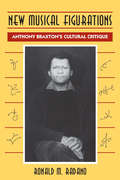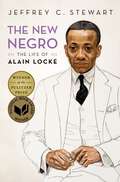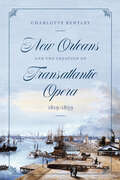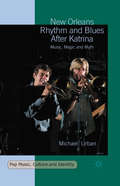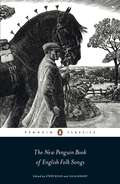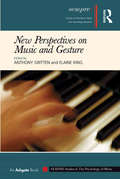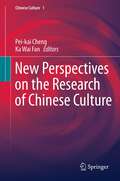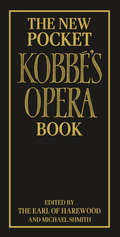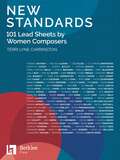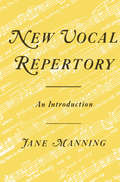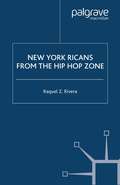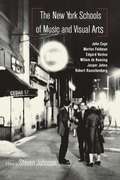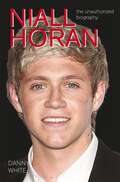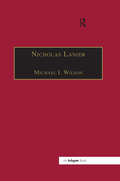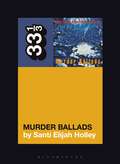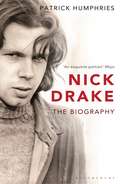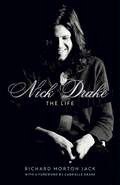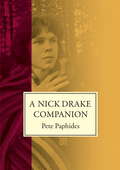- Table View
- List View
New Musical Figurations: Anthony Braxton's Cultural Critique
by Ronald M. RadanoNew Musical Figurations exemplifies a dramatically new way of configuring jazz music and history. By relating biography to the cultural and musical contours of contemporary American life, Ronald M. Radano observes jazz practice as part of the complex interweaving of postmodern culture—a culture that has eroded conventional categories defining jazz and the jazz musician. Radano accomplishes all this by analyzing the creative life of Anthony Braxton, one of the most emblematic figures of this cultural crisis. Born in 1945, Braxton is not only a virtuoso jazz saxophonist but an innovative theoretician and composer of experimental art music. His refusal to conform to the conventions of official musical culture has helped unhinge the very ideologies on which definitions of "jazz," "black music," "popular music," and "art music" are founded. New Musical Figurations gives the richest view available of this many-sided artist. Radano examines Braxton's early years on the South Side of Chicago, whose vibrant black musical legacy inspired him to explore new avenues of expression. Here is the first detailed history of Braxton's central role in the Association for the Advancement of Creative Musicians, the principal musician-run institution of free jazz in the United States. After leaving Chicago, Braxton was active in Paris and New York, collaborating with Philip Glass, Steve Reich, Frederic Rzewski, and other composers affiliated with the experimental-music movement. From 1974 to 1981, he gained renown as a popular jazz performer and recording artist. Since then he has taught at Mills College and Wesleyan University, given lectures on his theoretical musical system, and written works for chamber groups as well as large, opera-scale pieces. The neglect of radical, challenging figures like Braxton in standard histories of jazz, Radano argues, mutes the innovative voice of the African-American musical tradition. Refreshingly free of technical jargon, New Musical Figurations is more than just another variation on the same jazz theme. Rather, it is an exploratory work as rich in theoretical vision as it is in historical detail.
New Musical Figurations: Anthony Braxton's Cultural Critique
by Ronald M. RadanoNew Musical Figurations exemplifies a dramatically new way of configuring jazz music and history. By relating biography to the cultural and musical contours of contemporary American life, Ronald M. Radano observes jazz practice as part of the complex interweaving of postmodern culture—a culture that has eroded conventional categories defining jazz and the jazz musician. Radano accomplishes all this by analyzing the creative life of Anthony Braxton, one of the most emblematic figures of this cultural crisis. Born in 1945, Braxton is not only a virtuoso jazz saxophonist but an innovative theoretician and composer of experimental art music. His refusal to conform to the conventions of official musical culture has helped unhinge the very ideologies on which definitions of "jazz," "black music," "popular music," and "art music" are founded. New Musical Figurations gives the richest view available of this many-sided artist. Radano examines Braxton's early years on the South Side of Chicago, whose vibrant black musical legacy inspired him to explore new avenues of expression. Here is the first detailed history of Braxton's central role in the Association for the Advancement of Creative Musicians, the principal musician-run institution of free jazz in the United States. After leaving Chicago, Braxton was active in Paris and New York, collaborating with Philip Glass, Steve Reich, Frederic Rzewski, and other composers affiliated with the experimental-music movement. From 1974 to 1981, he gained renown as a popular jazz performer and recording artist. Since then he has taught at Mills College and Wesleyan University, given lectures on his theoretical musical system, and written works for chamber groups as well as large, opera-scale pieces. The neglect of radical, challenging figures like Braxton in standard histories of jazz, Radano argues, mutes the innovative voice of the African-American musical tradition. Refreshingly free of technical jargon, New Musical Figurations is more than just another variation on the same jazz theme. Rather, it is an exploratory work as rich in theoretical vision as it is in historical detail.
The New Negro: The Life of Alain Locke
by Jeffrey C. StewartWinner of the 2018 Pulitzer Prize for Biography Winner of the 2018 National Book Award for Nonfiction A tiny, fastidiously dressed man emerged from Black Philadelphia around the turn of the century to mentor a generation of young artists including Langston Hughes, Zora Neale Hurston, and Jacob Lawrence and call them the New Negro -- the creative African Americans whose art, literature, music, and drama would inspire Black people to greatness. In The New Negro: The Life of Alain Locke, Jeffrey C. Stewart offers the definitive biography of the father of the Harlem Renaissance, based on the extant primary sources of his life and on interviews with those who knew him personally. He narrates the education of Locke, including his becoming the first African American Rhodes Scholar and earning a PhD in philosophy at Harvard University, and his long career as a professor at Howard University. Locke also received a cosmopolitan, aesthetic education through his travels in continental Europe, where he came to appreciate the beauty of art and experienced a freedom unknown to him in the United States. And yet he became most closely associated with the flowering of Black culture in Jazz Age America and his promotion of the literary and artistic work of African Americans as the quintessential creations of American modernism. In the process he looked to Africa to find the proud and beautiful roots of the race. Shifting the discussion of race from politics and economics to the arts, he helped establish the idea that Black urban communities could be crucibles of creativity. Stewart explores both Locke's professional and private life, including his relationships with his mother, his friends, and his white patrons, as well as his lifelong search for love as a gay man. Stewart's thought-provoking biography recreates the worlds of this illustrious, enigmatic man who, in promoting the cultural heritage of Black people, became -- in the process -- a New Negro himself.
The New Negro: The Life of Alain Locke
by Jeffrey C. StewartWinner of the 2018 Pulitzer Prize for Biography Winner of the 2018 National Book Award for Nonfiction A tiny, fastidiously dressed man emerged from Black Philadelphia around the turn of the century to mentor a generation of young artists including Langston Hughes, Zora Neale Hurston, and Jacob Lawrence and call them the New Negro -- the creative African Americans whose art, literature, music, and drama would inspire Black people to greatness. In The New Negro: The Life of Alain Locke, Jeffrey C. Stewart offers the definitive biography of the father of the Harlem Renaissance, based on the extant primary sources of his life and on interviews with those who knew him personally. He narrates the education of Locke, including his becoming the first African American Rhodes Scholar and earning a PhD in philosophy at Harvard University, and his long career as a professor at Howard University. Locke also received a cosmopolitan, aesthetic education through his travels in continental Europe, where he came to appreciate the beauty of art and experienced a freedom unknown to him in the United States. And yet he became most closely associated with the flowering of Black culture in Jazz Age America and his promotion of the literary and artistic work of African Americans as the quintessential creations of American modernism. In the process he looked to Africa to find the proud and beautiful roots of the race. Shifting the discussion of race from politics and economics to the arts, he helped establish the idea that Black urban communities could be crucibles of creativity. Stewart explores both Locke's professional and private life, including his relationships with his mother, his friends, and his white patrons, as well as his lifelong search for love as a gay man. Stewart's thought-provoking biography recreates the worlds of this illustrious, enigmatic man who, in promoting the cultural heritage of Black people, became -- in the process -- a New Negro himself.
New Orleans and the Creation of Transatlantic Opera, 1819–1859 (Opera Lab: Explorations in History, Technology, and Performance)
by Charlotte BentleyA history of nineteenth-century New Orleans and the people who made it a vital, if unexpected, part of an emerging operatic world. New Orleans and the Creation of Transatlantic Opera, 1819–1859 explores the thriving operatic life of New Orleans in the first half of the nineteenth century, drawing out the transatlantic connections that animated it. By focusing on a variety of individuals, their extended webs of human contacts, and the materials that they moved along with them, this book pieces together what it took to bring opera to New Orleans and the ways in which the city’s operatic life shaped contemporary perceptions of global interconnection. The early chapters explore the process of bringing opera to the stage, taking a detailed look at the management of New Orleans’s Francophone theater, the Théâtre d’Orléans, as well as the performers who came to the city and the reception they received. But opera’s significance was not confined to the theater, and later chapters of the book examine how opera permeated everyday life in New Orleans, through popular sheet music, novels, magazines and visual culture, and dancing in its many ballrooms. Just as New Orleans helped to create transatlantic opera, opera in turn helped to create the city of New Orleans.
New Orleans Rhythm and Blues After Katrina: Music, Magic and Myth (Pop Music, Culture and Identity)
by Michael UrbanMusic, magic and myth are elements essential to the identities of New Orleans musicians. The city's singular contributions to popular music around the world have been unrivaled; performing this music authentically requires collective improvisation, taking performers on sonorous sojourns in unanticipated, 'magical' moments; and membership in the city's musical community entails participation in the myth of New Orleans, breathing new life into its storied traditions. On the basis of 56 open-ended interviews with those in the city's musical community, Michael Urban discovers that, indeed, community is what it is all about. In their own words, informants explain that commercial concerns are eclipsed by the pleasure of playing in 'one big band' that disassembles daily into smaller performing units whose rosters are fluid, such that, over time, 'everybody plays with everybody'. Although Hurricane Katrina nearly terminated the city, New Orleans and its music—in no small part due to the sacrifices and labors of its musicians—have come back even stronger. Dancing to their own drum, New Orleanians again prove themselves to be admirably out of step with the rest of America.
The New Penguin Book of English Folk Songs
by Julia Bishop Steve RoudOne of the Spectator's Books of the Year 2012 'Farewell and adieu to you fair Spanish ladiesFarewell and adieu to you ladies of SpainFor we've received orders for to sail for old EnglandBut we hope in a short while to see you again'One of the great English popular art forms, the folk song can be painful, satirical, erotic, dramatic, rueful or funny. They have thrived when sung on a whim to a handful of friends in a pub; they have bewitched generations of English composers who have set them for everything from solo violin to full orchestra; they are sung in concerts, festivals, weddings, funerals and with nobody to hear but the singer.This magical new collection brings together all the classic folk songs as well as many lesser-known discoveries, complete with music and annotations on their original sources and meaning. Published in cooperation with the English Folk Dance and Song Society, it is a worthy successor to Ralph Vaughan Williams and A.L.Lloyd's original Penguin Book of English Folk Songs.'Her keen eye did glitter like the bright stars by nightThe robe she was wearing was costly and whiteHer bare neck was shaded with her long raven hairAnd they called her pretty Susan, the pride of Kildare'In association with EFDSS, the English Folk Dance and Song Society
New Perspectives on Music and Gesture (SEMPRE Studies in The Psychology of Music)
by Anthony Gritten Elaine KingBuilding on the insights of the first volume on Music and Gesture (Gritten and King, Ashgate 2006), the rationale for this sequel volume is twofold: first, to clarify the way in which the subject is continuing to take shape by highlighting both central and developing trends, as well as popular and less frequent areas of investigation; second, to provide alternative and complementary insights into the particular areas of the subject articulated in the first volume. The thirteen chapters are structured in a broad narrative trajectory moving from theory to practice, embracing Western and non-Western practices, real and virtual gestures, live and recorded performances, physical and acoustic gestures, visual and auditory perception, among other themes of topical interest. The main areas of enquiry include psychobiology; perception and cognition; philosophy and semiotics; conducting; ensemble work and solo piano playing. The volume is intended to promote and stimulate further research in Musical Gesture Studies.
New Perspectives on Music and Gesture (SEMPRE Studies in The Psychology of Music)
by Elaine King Anthony GrittenBuilding on the insights of the first volume on Music and Gesture (Gritten and King, Ashgate 2006), the rationale for this sequel volume is twofold: first, to clarify the way in which the subject is continuing to take shape by highlighting both central and developing trends, as well as popular and less frequent areas of investigation; second, to provide alternative and complementary insights into the particular areas of the subject articulated in the first volume. The thirteen chapters are structured in a broad narrative trajectory moving from theory to practice, embracing Western and non-Western practices, real and virtual gestures, live and recorded performances, physical and acoustic gestures, visual and auditory perception, among other themes of topical interest. The main areas of enquiry include psychobiology; perception and cognition; philosophy and semiotics; conducting; ensemble work and solo piano playing. The volume is intended to promote and stimulate further research in Musical Gesture Studies.
New Perspectives on the Research of Chinese Culture (Chinese Culture #1)
by Pei-kai Cheng and Ka Wai FanThis volume contains high quality articles, originally published in Chinese in the Chinese Journal Jiuzhou Xuelin [Chinese Cultural Quarterly] and new articles written on special invitation by established scholars in the field. The theme of the volume is 'New Perspectives on Research of Chinese Culture', introducing the latest trends and new developments in the research into Chinese history, humanities, music and geography. The articles are written by well-known scholars in the field who examine Chinese culture from various new perspectives adopting different research methods.
The New Pocket Kobbé's Opera Book
by Earl Of HarwoodThe New Pocket Kobbe's Complete Opera Book is the world's leading reference work on opera, and (in the words of Bernard Levin) 'no single-volume operatic guide can possibly compare with it'. Kobbe is the only book which summaries the libretti of the world's opera, describes their music and gives a history of their performance within a single volume. But it is a large and relatively expensive book. The new pocket edition, at a price accessable to the huge new audience for opera, has been redesigned and extended, existing entries have been rewritten, and new operas included. The total number of works covered is now over 200, including important new works like John Adams Nixon in China, Harrison Birtwistle's Gawain and Thomas Ades's Powder Her Face, and a number of half-forgotten works that are now undergoing revival. Unlike the previous edition, it is now simply arranged, alphabetically by composer. Lord Harewood's strongly individual commentaries, together with his unparalleled knowledge of and enthusiasm for opera, make the New Pocket Kobbe a book no opera-goer can afford to be without.
New Vocal Repertory: An Introduction
by Jane ManningAn introduction to 70 songs from the contemporary vocal repertoire which provides advice on performance and suggestions on programming. It is designed for young singers and singing students.
New Wave: Image is Everything (Pop Music, Culture and Identity)
by K. AdkinsNew Wave: Image is Everything traces the evolution of the often neglected pop music genre, new wave. Using artists from Elvis Costello to Cyndi Lauper as illustrations, the book argues that new wave was among the first flowerings of postmodern theory in popular culture.
New York Ricans from the Hip Hop Zone (New Directions in Latino American Cultures)
by R. RiveraNew York Puerto Ricans have been an integral part of hip hop culture since day one: from 1970s pioneers like Rock Steady Crew's Jo-Jo, to recent rap mega-stars Big Punisher (R.I.P.) and Angie Martinez. Yet, Puerto Rican participation and contributions to hip hop have often been downplayed and even completely ignored. And when their presence has been acknowledged, it has frequently been misinterpreted as a defection from Puerto Rican culture and identity, into the African American camp. But nothing could be further from the truth. Through hip hop, Puerto Ricans have simply stretched the boundaries of Puerto Ricanness and latinidad.
The New York Schools of Music and the Visual Arts
by John Cage Morton Feldman Edgard Varèse Willem De Kooning Jasper Johns Robert RauschenbergMusicians and artists have always shared mutual interests and exchanged theories of art and creativity. This exchange climaxed just after World War II, when a group of New York-based musicians, including John Cage, Morton Feldman, Earle Brown, and David Tudor, formed friendships with a group of painters. The latter group, now known collectively as either the New York School or the Abstract Expressionists, included Jackson Pollock, Willem deKooning, Robert Motherwell, Mark Rothko, Barnett Newman, Clyfford Still, Franz Kline, Phillip Guston, and William Baziotes. The group also included a younger generation of artists-particularly Robert Rauschenberg and Jasper Johns-that stood somewhat apart from the Abstract Expressionists. This group of painters created what is arguably the first significant American movement in the visual arts. Inspired by the artists, the New York School composers accomplished a similar feat. By the beginning of the 1960s, the New York Schools of art and music had assumed a position of leadership in the world of art. For anyone interested in the development of 20th century art, music, and culture, The New York Schools of Music and Art will make for illuminating reading.
The New York Schools of Music and the Visual Arts
by Steven JohnsonMusicians and artists have always shared mutual interests and exchanged theories of art and creativity. This exchange climaxed just after World War II, when a group of New York-based musicians, including John Cage, Morton Feldman, Earle Brown, and David Tudor, formed friendships with a group of painters. The latter group, now known collectively as either the New York School or the Abstract Expressionists, included Jackson Pollock, Willem deKooning, Robert Motherwell, Mark Rothko, Barnett Newman, Clyfford Still, Franz Kline, Phillip Guston, and William Baziotes. The group also included a younger generation of artists-particularly Robert Rauschenberg and Jasper Johns-that stood somewhat apart from the Abstract Expressionists. This group of painters created what is arguably the first significant American movement in the visual arts. Inspired by the artists, the New York School composers accomplished a similar feat. By the beginning of the 1960s, the New York Schools of art and music had assumed a position of leadership in the world of art. For anyone interested in the development of 20th century art, music, and culture, The New York Schools of Music and Art will make for illuminating reading.
Niall Horan: The Unauthorized Biography
by Danny WhiteWith One Direction, Niall has sold over 14 million singles and 8 million albums. Their records have topped charts in more than sixteen countries, they have won two BRIT awards and and three MTV Video Music Awards, embarked on sell-out concert tours, and become a business empire with an estimated value of $50m. Niall's personal wealth is estimated at £5m. Niall Horan: The Unauthorized Biography is the story of how a short, smalltown Irish boy shot to overnight national and then global fame. Born in Mullingar, County Westmeath, Niall's early years were difficult as he and his older brother endured the breakdown of their parents' marriage and subsequent divorce. Living between each of his parents' home for the next few years before eventually settling with his father, it was in this period that Niall embarked upon his remarkable musical journey. Stints in the school choir and performances around his homeland, including in support of Lloyd Daniels in Dublin, propelled him to The X Factor and his first brushes with fame. Nothing could have prepared Niall for the adulation and success that followed. Written by Danny White, the author of the Sunday Times bestseller 1D: The One Direction Story, the book reveals how Niall quickly transformed to become as popular as leading light Harry Styles.
Nicholas Lanier: Master of the King's Musick
by MichaelI. WilsonNicholas Lanier (1588-1666) was not only the first person to hold the office of Master of the Music to King Charles I, he was also a practising painter, a friend of Rubens, Van Dyck and many other artists of his time, and one of the very first great art collectors and connoisseurs. He is especially remembered for the part he played in acquiring, on behalf of Charles I, the famous collection of paintings belonging to the Gonzaga family of Mantua. Many of these paintings still form an important part of the Royal Collection today. In this book the different strands of Lanier's colourful life are for the first time drawn together and presented in a single compelling narrative.
Nicholas Lanier: Master of the King's Musick
by MichaelI. WilsonNicholas Lanier (1588-1666) was not only the first person to hold the office of Master of the Music to King Charles I, he was also a practising painter, a friend of Rubens, Van Dyck and many other artists of his time, and one of the very first great art collectors and connoisseurs. He is especially remembered for the part he played in acquiring, on behalf of Charles I, the famous collection of paintings belonging to the Gonzaga family of Mantua. Many of these paintings still form an important part of the Royal Collection today. In this book the different strands of Lanier's colourful life are for the first time drawn together and presented in a single compelling narrative.
Nick Cave and the Bad Seeds' Murder Ballads (33 1/3)
by Santi Elijah HolleyIn a bar called The Bucket of Blood, a man shoots the bartender four times in the head. In the small town of Millhaven, a teenage girl secretly and gleefully murders her neighbors. A serial killer travels from home to home, quoting John Milton in his victims' blood.Murder Ballads, the ninth studio album from Nick Cave and the Bad Seeds, is a gruesome, blood-splattered reimagining of English ballads, American folk and blues music, and classic literature. Most of the stories told on Murder Ballads have been interpreted many times, but never before had they been so graphic or profane. Though earning the band their first Parental Advisory warning label, Murder Ballads, released in 1996, brought Nick Cave and the Bad Seeds their biggest critical and commercial success, thanks in part to the award-winning single, “Where the Wild Roses Grow,” an unlikely duet with Australian pop singer, Kylie Minogue.Closely examining each of the ten songs on the album, Santi Elijah Holley investigates the stories behind the songs, and the numerous ways these ballads have been interpreted through the years. Murder Ballads is a tour through the evolution of folk music, and a journey into the dark secrets of American history.
Nick Cave and the Bad Seeds' Murder Ballads (33 1/3 #151)
by Santi Elijah HolleyIn a bar called The Bucket of Blood, a man shoots the bartender four times in the head. In the small town of Millhaven, a teenage girl secretly and gleefully murders her neighbors. A serial killer travels from home to home, quoting John Milton in his victims' blood.Murder Ballads, the ninth studio album from Nick Cave and the Bad Seeds, is a gruesome, blood-splattered reimagining of English ballads, American folk and blues music, and classic literature. Most of the stories told on Murder Ballads have been interpreted many times, but never before had they been so graphic or profane. Though earning the band their first Parental Advisory warning label, Murder Ballads, released in 1996, brought Nick Cave and the Bad Seeds their biggest critical and commercial success, thanks in part to the award-winning single, “Where the Wild Roses Grow,” an unlikely duet with Australian pop singer, Kylie Minogue.Closely examining each of the ten songs on the album, Santi Elijah Holley investigates the stories behind the songs, and the numerous ways these ballads have been interpreted through the years. Murder Ballads is a tour through the evolution of folk music, and a journey into the dark secrets of American history.
Nick Drake: The Biography
by Patrick HumphriesNick Drake was barely 26 years old when he died in 1974. The British singer-songwriter made only three albums during his short life time: "Five Leaves Left", "Bryter Layer" and "Pink Moon". All are now recognized as classics.;Since his death, Nick has been cited as a seminal influence by stars as diverse as REM, Elton John, Paul Weller, Jackson Brown, Everything But the Girl, Tom Verlaine and Matt Johnson of The The.;This biography includes extensive interviews with friends, colleagues and musicians who knew and worked with Nick. It provides an insight into the life and work of Nick Drake, and also the music scene of the 1960s that formed his backdrop.;The author's lifelong appreciations of and interest in Nick Drake were further fuelled when he discovered that his uncle Dr James Lusk actually delivered Nick into the world and remained a friend of the Drake family. In the book, he draws on a long letter from Nick's father to Dr Lusk, in which he describes how Nick's mother, discovered Nick's body during the morning of 25 November 1974, following an accidental overdose of prescribed drugs.
Nick Drake: The Life
by Richard Morton Jack'This is the book we've been waiting for - the one Nick's legacy deserves and so badly needs. Richard Morton Jack has reconstructed Nick's life with great sensitivity and care, and in remarkable detail. It is a biography to be treasured' Joe BoydIn 1968 Nick Drake had everything to live for. The product of a loving, creative family and a privileged background, he was not only a handsome and popular Cambridge undergraduate, but also a new signing to the UK's hippest record label, Island.Three years later, however - having made three well-reviewed but low-selling albums - Nick had been overwhelmed by a mysterious mental illness. He returned to live in his family home in rural Warwickshire in 1971, and died in obscurity in 1974, aged just 26.In the decades since, Nick has become the subject of ever-growing fascination and speculation. Combined sales of his records now stand in the millions, his songs are frequently heard on TV and in films, and he has become one of the most widely known and admired singer-songwriters of his generation.Nick Drake: The Life is the only biography of Nick to be written with the blessing and involvement of his sister and Estate. Drawing on copious original research and new interviews with his family, friends and musical collaborators, as well as deeply personal archive material unavailable to previous writers - including his father's diaries, his essays and private correspondence - this is the most comprehensive and authoritative account possible of Nick's short and enigmatic life.Includes a foreword by Gabrielle Drake and over 75 photos, many rare or previously unseen.
A Nick Drake Companion
by Pete PaphidesThis short book, taken from Remembered For A While, tells the stories and circumstances that surround every known recording in Nick Drake's canon (as well as a few unrecorded songs). The result is like a detailed, extended series of liner notes, something to read while sitting in your favourite chair, in your favourite room, listening to the imperishably beautiful music they describe. A Nick Drake companion.
